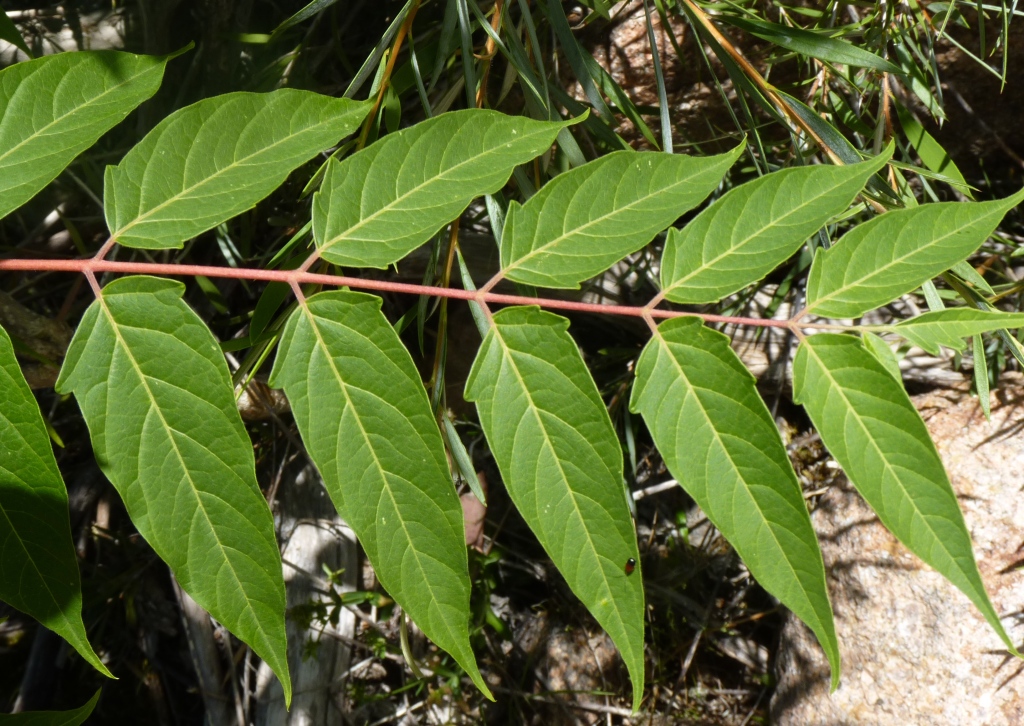Ailanthus altissima
(Mill.) Swingle Tree of HeavenErect, deciduous tree to c. 10 m high, often suckering and forming thickets. Leaves imparipinnate or paripinnate, c. oblong in outline, 20–80 cm long; petiolules 3–12 mm long; leaflets up to c. 20 pairs, subopposite, obliquely ovate or broad-lanceolate, 4–14 cm long, 2–5 cm long, base almost truncate, margin 1–few-toothed either side near base, each tooth gland-tipped, lower surface often glaucous, glabrous or with a few hairs around margin and near midvein. Calyx 1–1.5 mm long, broadly lobed to c. midway; petals 2–3 mm long, woolly toward base on inner surface and margins; nectary-disc glabrous; male flowers with stamens slightly exceeding petals, filaments pubescent toward base; pistillode rudimentary or absent; female flowers with staminodes c. half petal length; carpels 5, styles united, stigma 5-lobed. Samaras oblong-elliptic, 4–5 cm long, c. 1 cm wide, papery; seed c. central, lenticular, c. 4 mm diam. Flowers Nov.–Jan.
GleP, VVP, VRiv, MuF, GipP, OtP, WaP, Gold, CVU, NIS, EGU, HSF, HNF, OtR, Strz. Also naturalised WA, SA, Qld, NSW, ACT. Native to eastern Asia. Scattered through the State; often persisting in and spreading from old farm sites, common along watercourses, particularly in north-eastern Victoria and Melbourne suburbs. Probably more widespread than records indicate. A declared noxious weed in Victoria (except in Melbourne metropolitan area).
The leaves and bark are used in traditional Chinese medicine, but may cause dermatitis in some people.
Walsh, N.G. (1999). Simaroubaceae. In: Walsh, N.G.; Entwisle, T.J., Flora of Victoria Vol. 4, Cornaceae to Asteraceae, pp. 152–153. Inkata Press, Melbourne.
 Spinning
Spinning




